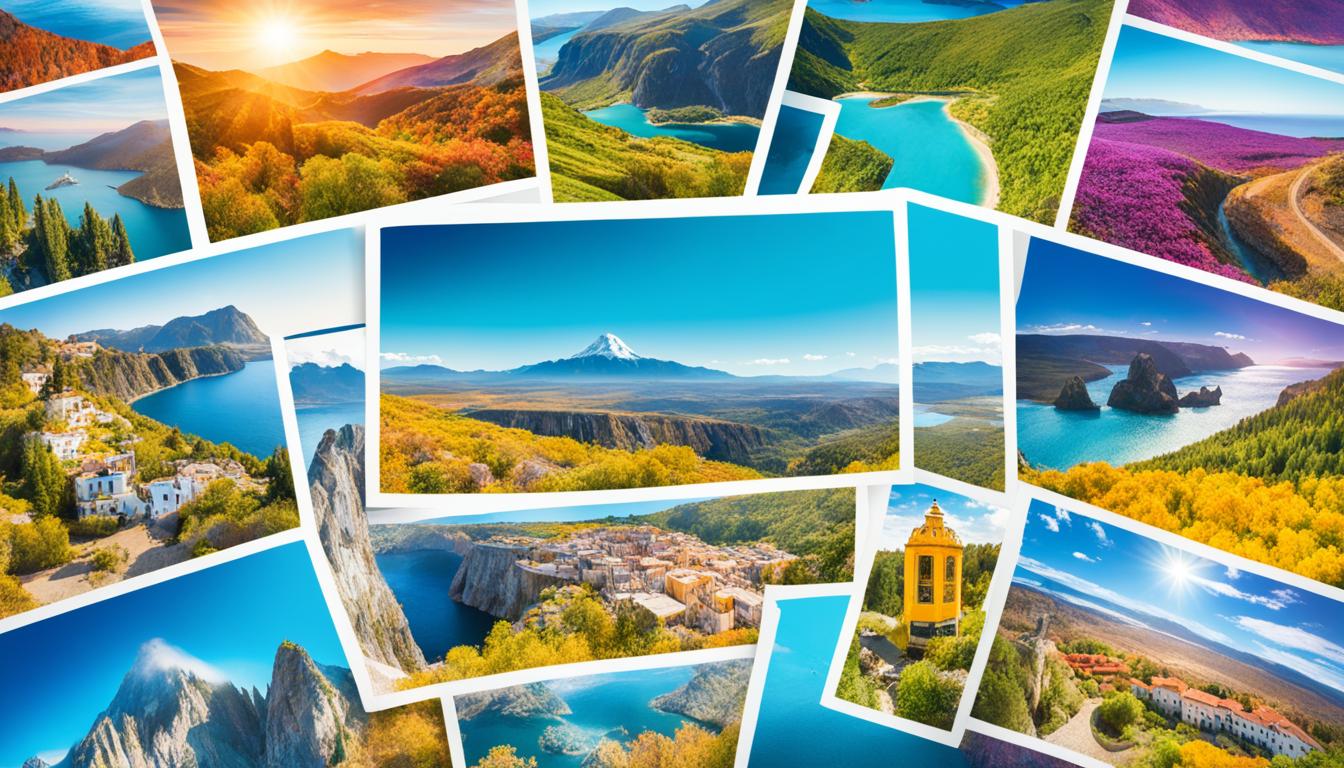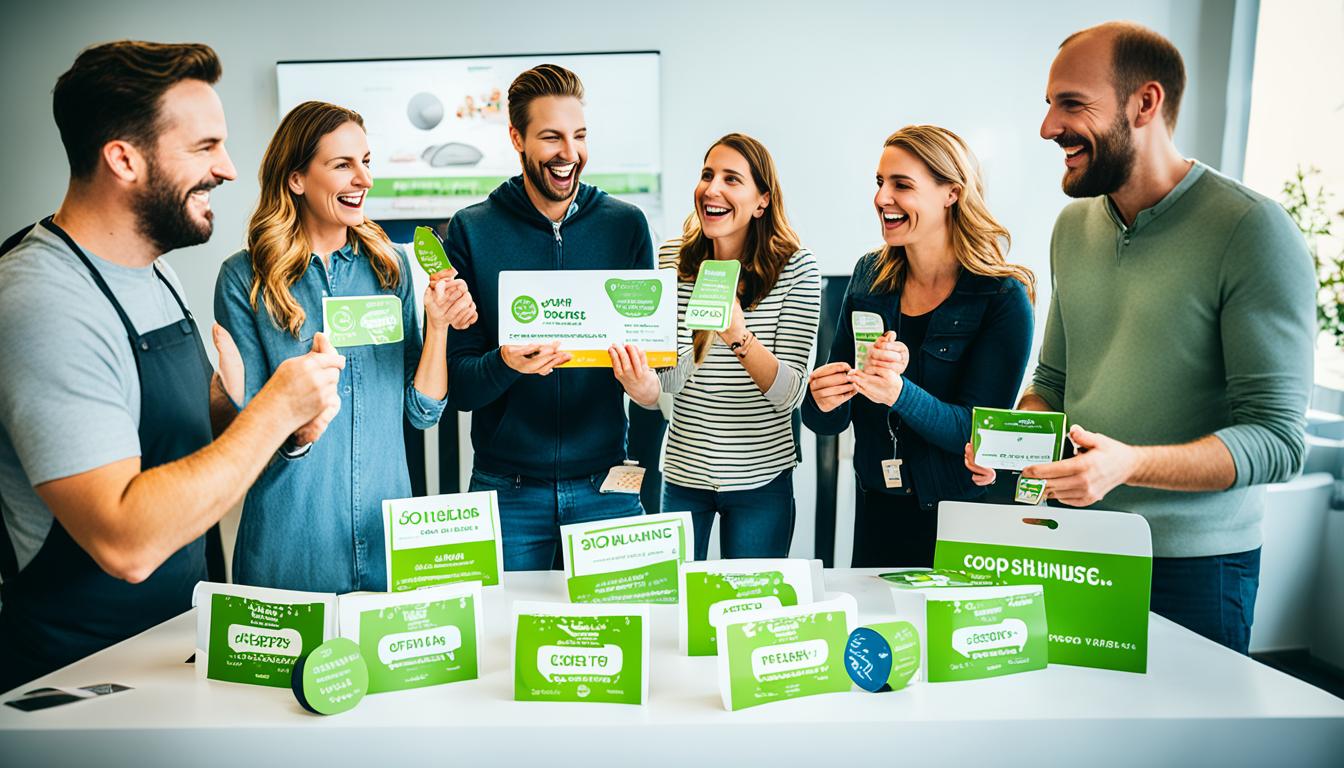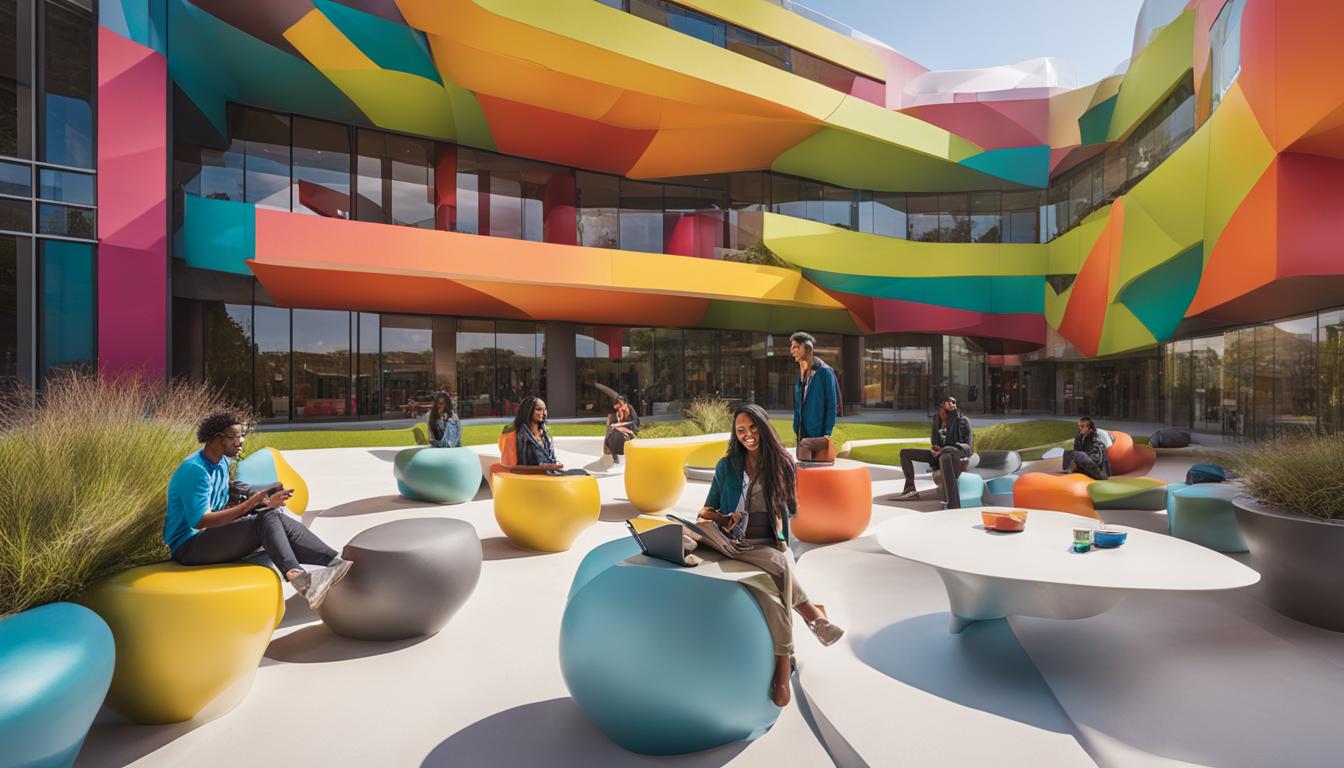Experiential marketing is also called engagement marketing or XM marketing. This strategy gets the audience involved with a business in real-life. It uses interactive and engaging branding materials. These showcase not only what the business sells, but also its values. This method is gaining traction. Now, 77% of marketers believe it’s an essential part of their advertising. In this article, we dive into experiential marketing. Plus, we’ll show off successful campaigns that highlight how effective it can be.
Key Takeaways:
- Experiential marketing is a strategy that encourages audience interaction.
- It uses immersive experiences to showcase a brand’s values and offerings.
- 77% of marketers incorporate experiential marketing into their campaigns.
- This marketing approach creates lasting connections and builds customer loyalty.
- We will showcase successful campaigns to illustrate the power of experiential marketing.
What is Experiential Marketing?
Experiential marketing goes by many names, like engagement marketing or live marketing. It’s a way to make marketing immersive and interactive. Customers get to experience a brand in real life, not just see ads. This could be through events, pop-up stores, or even online with webinars.
The aim is to make the brand’s relationship with people stronger, boost its visibility, motivate people to act, and keep customers loyal.
Why Experiential Marketing Matters Today
Experiential marketing is key in today’s digital world. It lets brands build strong bonds with their customers. These immersive experiences help increase customer loyalty and engagement.
Also, experiential marketing helps brands learn about customer likes and behaviors. This leads to more personalized marketing strategies.
This marketing type is great for creating online buzz. Happy customers tend to share their experiences online. This organic sharing boosts brand recognition and awareness.
Experiential marketing also opens up paths for real-time online chats with the audience. Brands can quickly respond to customer questions and concerns. This builds a strong community feeling.
By interacting with customers, brands get valuable insights. They learn what works and what doesn’t. This helps in plotting future strategies and creating better products.
In short, experiential marketing is crucial for making a brand stand out today. It drives customer interaction, collects data, and fosters online conversations. With continued innovation, it will keep being essential for keeping customers engaged and loyal.
The Benefits of Experiential Marketing
Experiential marketing has lots of perks for brands. For starters, it ramps up brand awareness by making memorable experiences. These experiences stick with the audience. Brands get to interact with customers in meaningful ways. This helps build customer loyalty and boosts repeat business.
Customer engagement also gets a big lift from experiential marketing. It lets customers become part of the brand’s story. Through hands-on activities, immersive environments, or interactive setups, a deeper bond forms between the brand and its audience.
Experiential marketing can create a buzz, making campaigns go viral. This ups brand exposure because people share their experiences online. If an experience strikes a chord, folks are keen to share it. This spreads the brand’s message far and wide.
In a nutshell, experiential marketing isn’t just about making a mark. It also fosters customer loyalty, ramps up engagement, and could boost viral sharing. By crafting immersive, unforgettable experiences, brands can secure a special place in their audience’s hearts and minds.
| Benefits of Experiential Marketing |
|---|
| Boosts brand awareness |
| Builds customer loyalty |
| Improves customer engagement |
| Drives viral marketing |
Example 1: Warner Bros Pictures: Barbie Movie Selfie Generator
Warner Bros Pictures stepped up their game with a cool marketing plan for the Barbie Movie. They used AI to make a unique online tool called the Barbie Movie Selfie Generator.
On this website, people could make their own Barbie doll cover. The AI looked at their faces and made a beautiful Barbie version of them.
This campaign was designed to get people excited and feel part of the Barbie world. By making their own movie poster, fans got more hyped for the movie.
Sharing on social media was a big part of the plan. Every Barbie image showed the movie’s release date. People shared their Barbie selves on Instagram, Facebook, and Twitter. This got more people talking about the movie.
Warner Bros did a great job with this AI tool. It made fans part of the Barbie story. This helped boost the movie’s buzz and got people excited to see it.
| Benefits of Warner Bros Pictures’ Experiential Marketing Campaign |
|---|
| 1. Engaged moviegoers of all ages |
| 2. Increased anticipation for the Barbie Movie |
| 3. Expanded brand promotion through social media sharing |
| 4. Utilized generative AI technology |
Example 2: Red Bull: Stratos
Red Bull’s Stratos campaign set a new standard in experiential marketing with the highest skydive record. They teamed up with Felix Baumgartner for the challenge.
The event was live-streamed, attracting over 8 million YouTube viewers. The thrill of Felix ascending and then diving from the stratosphere was captivating. It showed how suspense and experiences can truly impact marketing.
The Stratos Campaign in Numbers:
| 8 million | Viewers on YouTube |
|---|---|
| 128,097,683 | Total shares on social media |
| 9,000 | Articles written about the campaign |
| 1.3 billion | Estimated media impressions |
Example 3: Refinery29: 29Rooms
Refinery29’s 29Rooms event is like a funhouse, but way cooler. It features 29 specially designed rooms, each with its own vibe. Guests get to experience something unique in every room. They blend art, culture, and tech to dive headfirst into each theme.
This event isn’t just for show. It lets you get hands-on, making your own art and connecting with others. Refinery29 works with famous artists, musicians, and brands to make sure every room has something special. This approach makes 29Rooms not just fun, but meaningful.
Overall, the 29Rooms event highlights the power of coming together and creating. It’s all about interactive fun that brings people closer, sparking creativity and community. It’s a place where entertainment meets art and social bonding.
| Key Features | Benefits |
|---|---|
| 29 individually curated rooms | Unique and immersive experiences |
| Art, culture, and technology integration | Engaging and interactive environment |
| Collaboration with renowned artists and musicians | Credibility and industry recognition |
| Community engagement and creativity | Fostering a sense of belonging |
Example 4: Lean Cuisine: #WeighThis
The #WeighThis campaign by Lean Cuisine was empowering. It aimed to challenge how society views weight. It encouraged women to share what they truly valued about themselves.
At Grand Central Station, Lean Cuisine set up an interactive art piece. Women stepped on scales not to weigh themselves, but to write down their goals and accomplishments. These scales became a symbol of personal achievements, not just numbers.
The campaign did more than question beauty norms. It showed Lean Cuisine’s support for a positive self-view. It helped women feel empowered by celebrating their achievements.
#WeighThis made people talk about self-worth and the true meaning of beauty. It showed the importance of valuing women for more than their looks. This encouraged everyone to think about what really matters to them.
Lean Cuisine’s campaign shows the power of experiential marketing. It was not just about promoting a product. It was about making a real difference in how people see themselves and others.
Conclusion
Experiential marketing lets brands connect deeply with customers. It uses unforgettable experiences and interactions. This boosts customer engagement and loyalty. Experiential marketing campaigns use new tech and partner with creators. They stay true to brand values. This approach not only creates buzz but also leaves a lasting mark on the audience.
Today, customers want real, meaningful interactions with their favorite brands. Experiential marketing answers this by creating moments that stick. These can be interactive events, eye-catching installations, or experiences tailored to each customer. This way, brands build deeper connections, moving past typical ads.
As brands look for new ways to engage with their customers, experiential marketing stands out. It offers unforgettable experiences that connect emotionally with customers. This emotional bond increases loyalty and support. In a world full of brands, those that offer unique experiences through experiential marketing shine. They achieve lasting success.





